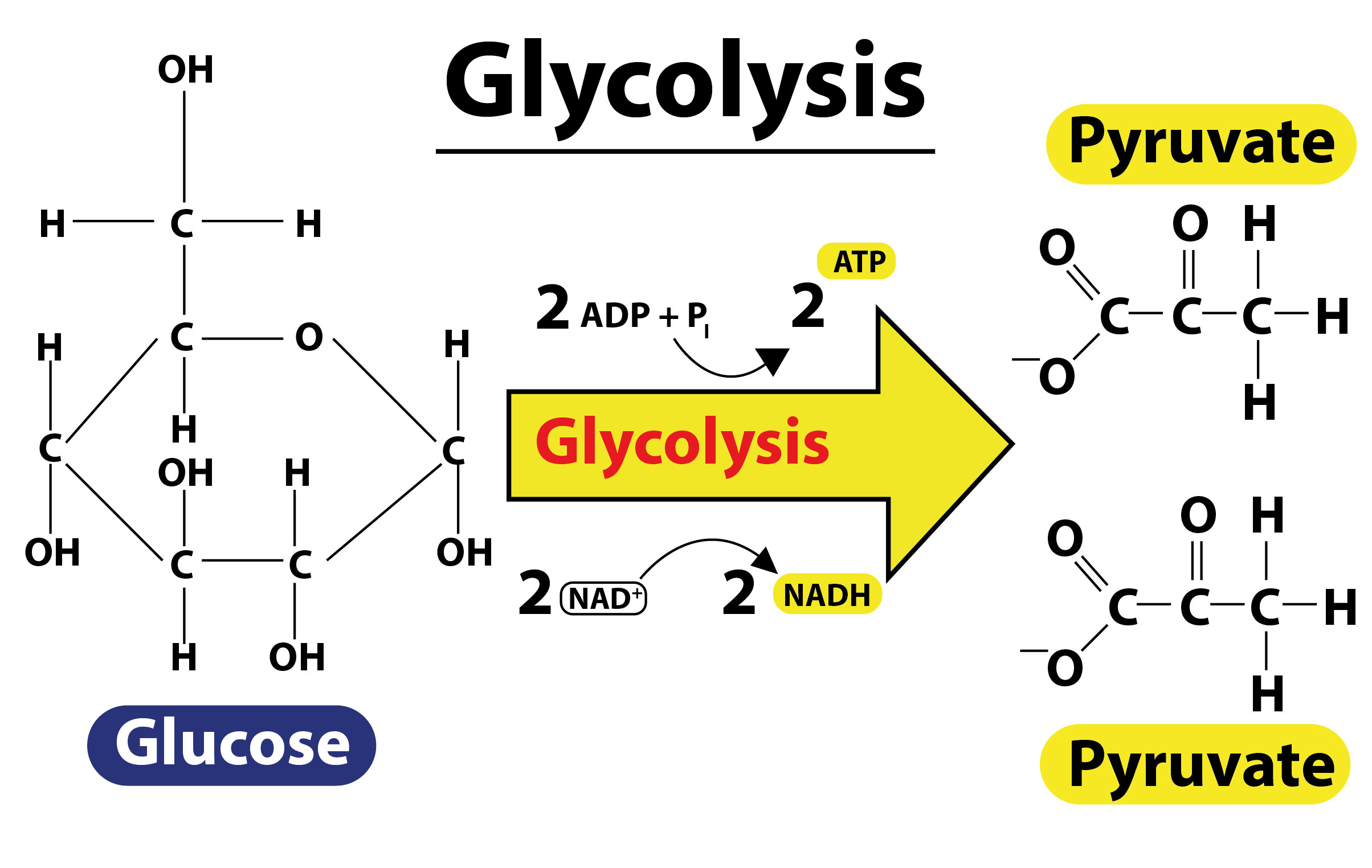
EMP is also known as
A. Glycolysis
B. Krebs cycle
C. ETS
D. Fermentation
Answer
572.1k+ views
Hint: EMP pathway is a metabolic process by which a single molecule of glucose is broken down into two pyruvate compounds. It breaks the six-carbon compounds into two molecules of three-carbon compounds.
Complete answer:
The process of glycolysis was first described in 1918 by Gustav Embden, Otto Meyerhoff, and Jakub Karol Parnas and therefore also referred to as the EMP pathway. It is the most common type of glycolysis.
Additional Information: -Glycolysis is the metabolic pathway that converts glucose into pyruvate and a hydrogen ion.
-It is a sequence of ten enzyme-catalyzed reactions.
-Glycolysis is an oxygen-independent metabolic pathway that occurs in the cytosol.
-The glycolysis pathway can be separated into two phases:
(a)The preparatory phase – wherein ATP is consumed.
(b)The pay off phase – wherein ATP is produced.
-Glycolysis does not need or consume oxygen, it generally occurs during anaerobic respiration.
-In this case, 2 molecules of ATP are consumed to initiate the process.
-Four molecules of ATP and two molecules of NADH are produced after the end of the process.
-The different Intermediary products formed in glycolysis can be used by plants in different metabolic functions of the body.
So, the correct answer is 'Glycolysis’.

Note: Krebs cycle is also known as the citric acid cycle or tricarboxylic acid cycle which is a series of chemical reactions used by all aerobic organisms to release stored energy. The electron transport chain is a series of complexes that transfers electrons through a membrane within mitochondria. Fermentation is a metabolic process by which glucose is broken down anaerobically.
Complete answer:
The process of glycolysis was first described in 1918 by Gustav Embden, Otto Meyerhoff, and Jakub Karol Parnas and therefore also referred to as the EMP pathway. It is the most common type of glycolysis.
Additional Information: -Glycolysis is the metabolic pathway that converts glucose into pyruvate and a hydrogen ion.
-It is a sequence of ten enzyme-catalyzed reactions.
-Glycolysis is an oxygen-independent metabolic pathway that occurs in the cytosol.
-The glycolysis pathway can be separated into two phases:
(a)The preparatory phase – wherein ATP is consumed.
(b)The pay off phase – wherein ATP is produced.
-Glycolysis does not need or consume oxygen, it generally occurs during anaerobic respiration.
-In this case, 2 molecules of ATP are consumed to initiate the process.
-Four molecules of ATP and two molecules of NADH are produced after the end of the process.
-The different Intermediary products formed in glycolysis can be used by plants in different metabolic functions of the body.
So, the correct answer is 'Glycolysis’.

Note: Krebs cycle is also known as the citric acid cycle or tricarboxylic acid cycle which is a series of chemical reactions used by all aerobic organisms to release stored energy. The electron transport chain is a series of complexes that transfers electrons through a membrane within mitochondria. Fermentation is a metabolic process by which glucose is broken down anaerobically.
Recently Updated Pages
Master Class 12 Business Studies: Engaging Questions & Answers for Success

Master Class 12 Economics: Engaging Questions & Answers for Success

Master Class 12 English: Engaging Questions & Answers for Success

Master Class 12 Maths: Engaging Questions & Answers for Success

Master Class 12 Social Science: Engaging Questions & Answers for Success

Master Class 12 Chemistry: Engaging Questions & Answers for Success

Trending doubts
What is meant by exothermic and endothermic reactions class 11 chemistry CBSE

Which animal has three hearts class 11 biology CBSE

10 examples of friction in our daily life

One Metric ton is equal to kg A 10000 B 1000 C 100 class 11 physics CBSE

1 Quintal is equal to a 110 kg b 10 kg c 100kg d 1000 class 11 physics CBSE

Difference Between Prokaryotic Cells and Eukaryotic Cells




